Report on exhibition at Ars Electronica Festival 2016
At Ars Electronica Festival 2016, held Thursday, September 8 through Monday, September 12, 2016 in Linz, Austria, Six students of the Ph.D. Program in Empowerment Informatics (EMP) (first-year student Rintaro Takashima, second-year student Kai Sasaki, and third-year students Shori Kano, John Brumley, Alberto Boem, and Joana Lobo) exhibited the results of research they had conducted as a team since April of this year in their Empowerment Informatics Project-based Research Course.
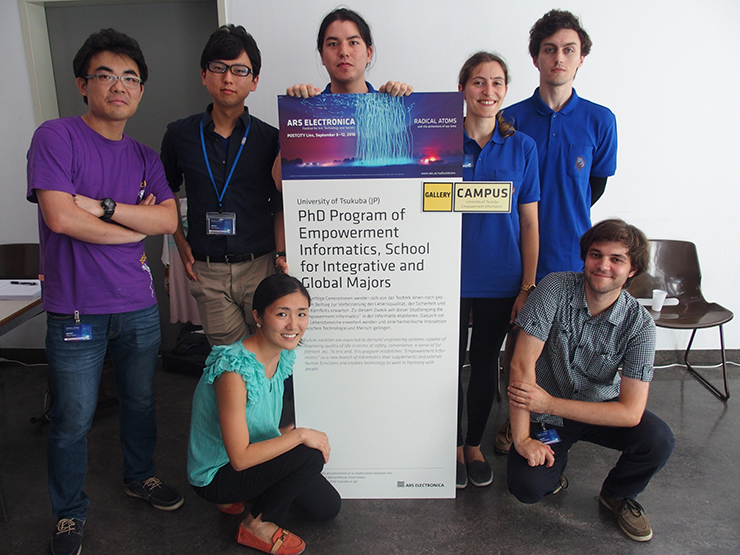
From the 8th to the 12th of September 2016 we took part at the Ars Electronica Festival in Linz, Austria. In this period we had the opportunity to show the results of the Project-Based Research class to a wide range of visitors, ranging from internationally renowned artists and researchers to normal citizens in the main venue of the festival, the so-called Post City.
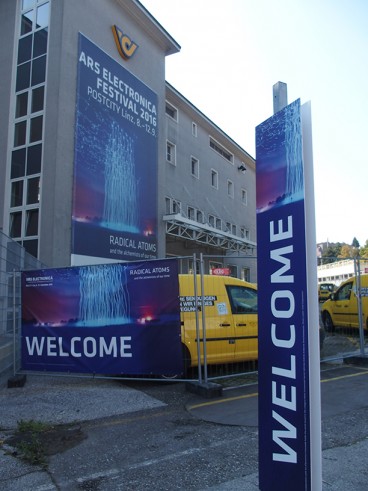
The Ars Electronica Festival is one of the oldest venue in the world (the first edition was helded in 1979) where art, technology and society meets in order to redifine their roles and reflect on themeselves through exhibitions, talks, performances and workshops. This year’s theme was “Radical Atoms, and the alchemists of our time”. Even if it sounds obscure, it was a very interesting attempt to explore a new territory where bits and atoms, cells and algorithms, the digital and the physical are somehow blurring their historical bonduaries. Along with a very impressive group of artworks, this year the festival was hosting a series of ‘Artist’s Lab’, where different research groups working between science and art were presenting their works and outcomes.
In April 2016 we started the class called “Project Based Research”. The aim of this class was to develop a research project through a collaborative and interdisciplinary approach. Two groups of students with different research interests, age and nationalities have been formed. Together with students Sasaki Kai and Kano Shori we have created “Vital+Morph”, a prototype of a novel shape-changing interface for real-time data physicalization. During the five days of the festival we received more then 6oo visits in our booth. The feedbacks and the dicussion we have received from every single visitor have been really interesting and helpful in order to improve our work in the near future.
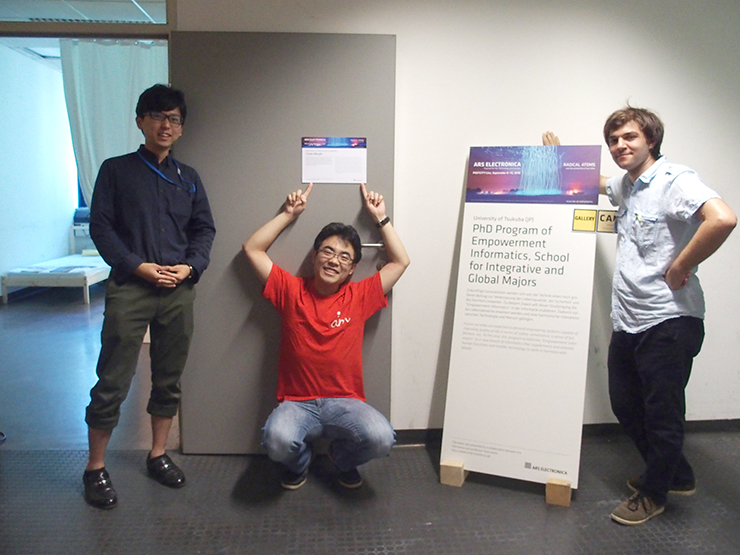
Mr. Sasaki, Mr. Kano, and Mr. Boem, who exhibited “Vital+Morph”
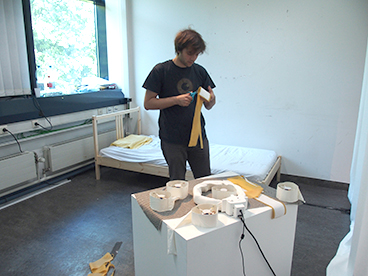
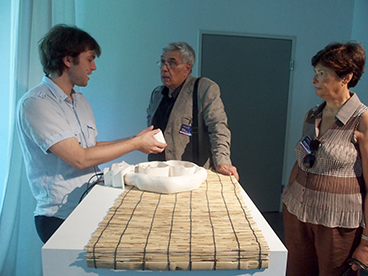
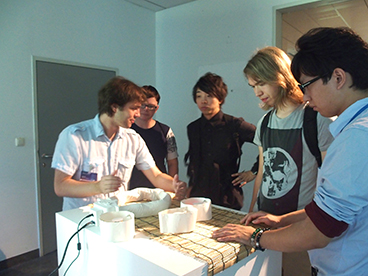
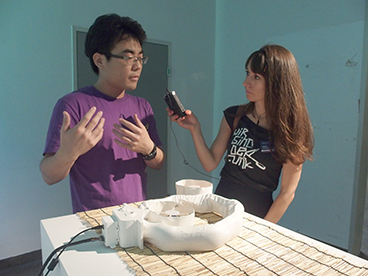
Along with the many events of this year festival, we have attended the “Campus Educators Forum”, a new platform for the discussion and exchange of perspectives between different university program leaders. During this series of talks Iwata-sensei have introduced Empowerment Informatics and his research activity.
In conclusion the experience was very intense, demanding but vey rewarding!
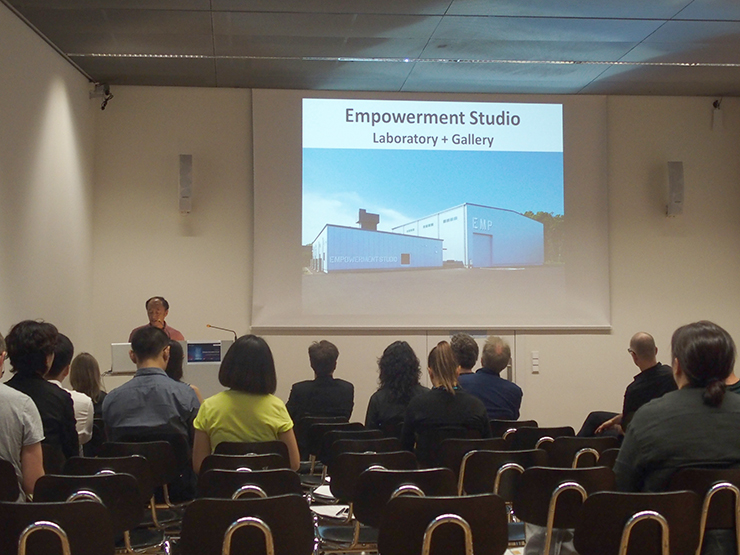
Our group exhibited the work ”Vital+Morph.” This work is an interface for supporting interacting and inter-recognition with hospital patients, using patients’ physical information and changes in physical forms. It consists of a form sharing device to support interaction and a form changing device to physicalize signals of patients’ vital signs. The former is used for sharing of forms while the latter is used for changing forms based on patients’ physical information.
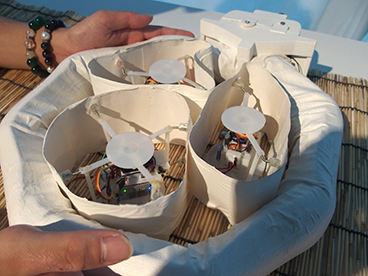
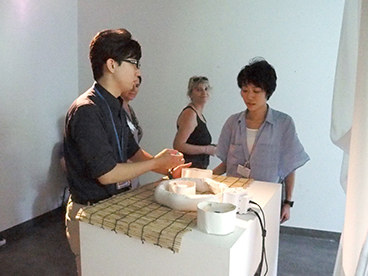
This work is a prototype that we created over several months beginning in April of this year, as part of our activities in the Empowerment Informatics Project-based Research Course that is one of the courses in the Ph.D. Program in Empowerment Informatics (EMP). We were uneasy as to whether we would be able to communicate our concept and motivations to attendees fully. When we actually exhibited the work received feedback from attendees, we were relieved to hear numerous positive comments, chiefly from senior citizens and attendees who came with their families, such as those who commented that the work should prove useful in the ageing society of today and the future. These comments also inspired us to be even more motivated toward future activities.
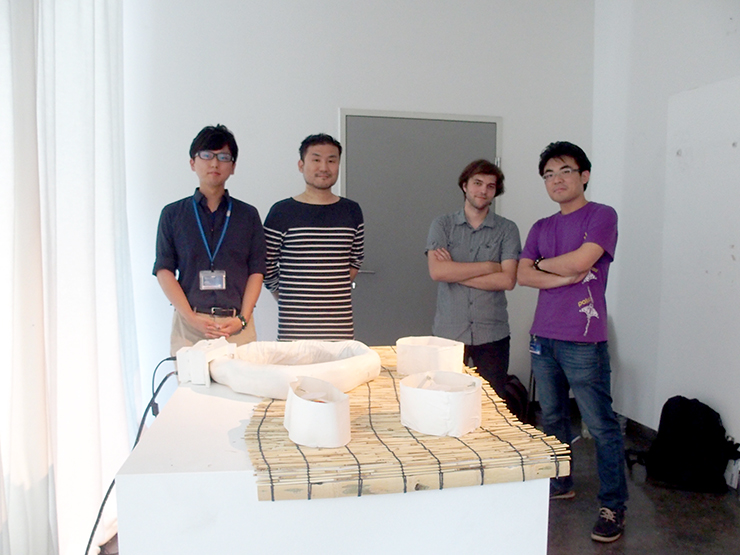
The concept presented by our group this year at Ars Electronica Festival focused on a jacket and fitness unit for converting exercise and biosignals into air haptics: the PitterPataPata system. We aimed to create a novel form of haptic actuation by bringing air-powered haptic actuation close to the body. By incorporating biosignals (ECG) and exercising speed as the drivers for actuation, we were interested in how effectively this form of actuation would increase awareness of a wearer’s own internal biological rhythm. The ultimate goal was to give the visitor an unique understanding of what is defined as inside and outside of his/her own body while performing a very common activity like exercising on a bicycle. The internal rhythm’s changes occurring while exercising are reflected on the jacket by gradual variations of jacket’s shapes along specific regions of the body, as well as different activation sequences for localized haptic feeling on the skin.
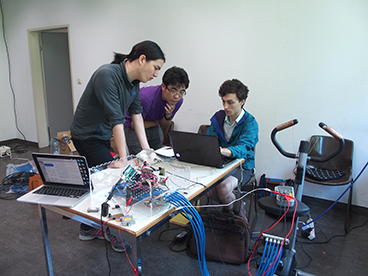
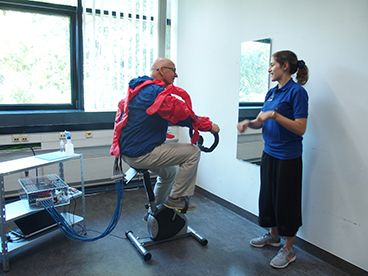
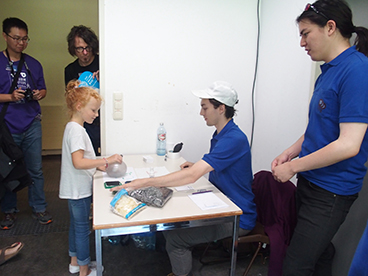
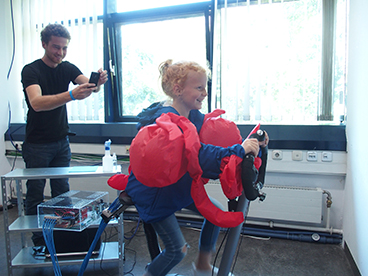
The name of the project, PitterPataPata, was born from combining the English word for a heart beating fast, pitter-patter, with the Japanese onomatopoeia for flapping or waving, pata pata. Furthermore, this project had the collaboration of a student from the Design department regarding the jacket design and fabrication, making it an even more interdisciplinary project.
During the five days of the festival, we presented our work as a Sports Club theme-based installation. On a sign-up desk, visitors could make their own Sports Club membership card by using their own ‘breath fingerprint’. On the exercise station, they could put on the jacket and ride a modified bicycle, providing them a dynamic visual, sound and haptic experience. More than 220 visitors had the opportunity to actually try out the jacket. From children to seniors, a lot of interesting feedback was received regarding the PitterPataPata system.
Although very intensive and physically tiring, the overall experience was very rewarding. Our team being able to show PitterPataPata at such a relevant exhibition was a positive achievement for the Project Based Research class.
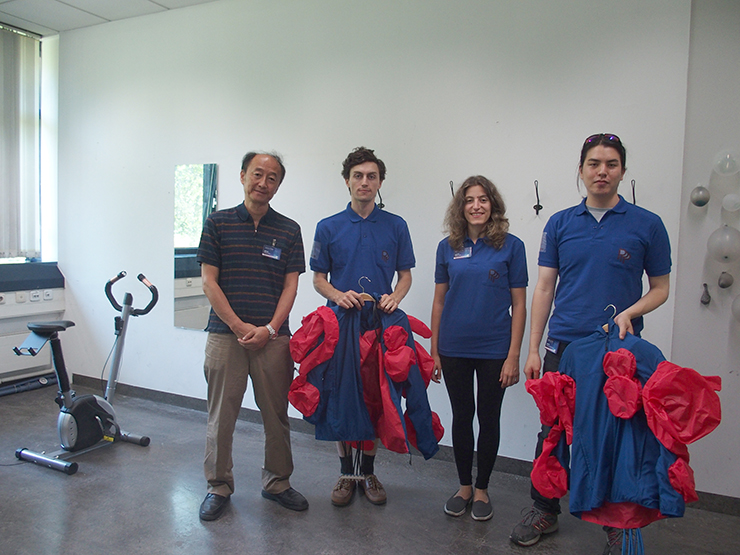
Mr. Brumley, Ms. Lobo, and Mr. Takashima, who exhibited “Pitter Patta Patta” with Program Leader Iwata





